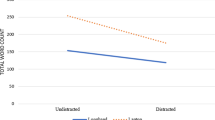Abstract
When students are working with hand held technology, such as graphic calculators, we usually only see the outcomes of their activities in the form of a contribution to a written solution of a mathematical problem. It is more difficult to capture their process of thinking or actions as they use the technology to solve the problem. In this paper we report on two case studies that follow the progress of students as they solve mathematical problems. We use software that works in the background of the graphic calculator capturing the students' keystrokes as they use the calculator. The aim of the research studies described in this paper was to provide insights into the working styles of these students. Through a detailed analysis of their graphic calculator keystrokes, interviews and associated written solutions we will discuss the effectiveness of their solution strategies and the efficiency of their use of the technology and identify some barriers to the use of graphic calculators in mathematical problem solving.
Kurzreferat
Wenn Schüler sich nicht netzbasierter Technologie bedienen, etwa graphikfähige Taschenrechner benutzen, so sehen wir gewöhnlich nur die Ergebnisse ihrer Aktivitäten als Beitrag zur ihrer schriftlichen Aufgabenlösung. Es ist schwierig, den Denkprozess als solchen einzufangen. In diesem Beitrag verfolgen wir in zwei Fallbeispielen diese Prozesse. Dabei bedienen wir uns einer Software im Hintergrund, durch die das Betätigen der Tasten aufgezeichnet wird. Ziel unserer Analyse ist es, Einsicht in die Arbeitsstile der Schüler zu gewinnen. Auf der Basis dieser Aufzeichnungen, unter Zuhilfenahme von Interviews und aufgrund der schriftlichen Aufgabenlösung diskutieren wir sowohl die Effektivität ihrer Lösungsstrategien als auch die der eingesetzten Technologie; dadurch können wir Barrieren identifizieren, die einem Einsatz des graphikfähigen Taschenrechners beim mathematischen Problemlösen entgegen stehen.
Similar content being viewed by others
References
Artigue, M., (2002), Learning mathematics in a CAS environment: The genesis of a reflection about instrumentation and the dialectics between technical and conceptual work, International Journal of Computers for Mathematical Learning, 7, 245–274.
Berry, J. and Smith, A. (2002) Observing Student Working Styles when using Graphic calculators. In, Borovcnik, M. and Kautschitsch, H. (eds.) Technology in Mathematics Teaching. Proc. of ICTMT5 in Klagenfurt, 2001, Schriftenreihe Didaktik der Mathematik v. 25, öbv&hpt, Vienna 2002, p 41–44
Burrill, G., Allison, J., Breaux, G., Kastberg, S., Leatham, K. and Sanchez, W. (2002). Handheld Graphing Technology in Secondary Mathematics: Research Findings and Implications for Classroom Practice Texas Instruments: Report CL2872.
Drijvers, P., (2004), Learning Algebra in a Computer Algebra Environment, International Journal for Technology in Mathematics Education, 3, 77–90.
Drijvers, P. and van Herwaarden, O. (2000), Instrumentation of ICT-tools: The case of algebra in a computer algebra environment, International Journal of Computer Algebra in Mathematics Education, 7, 255–275.
Dunham, P. H., and Dick, T. P. (1994): Research on Graphing Calculators. The Mathematics Teacher, 887(6), 440–445.
Dunham, P.H., (2000). Handheld calculators in mathematics education: a research perspective, NCTM Year Book 2000
Guin, D. and Trouche, L. (1999), The complex process of converting tools into mathematical instruments: The case of calculators, International Journal of Computers for mathematical Learning 3, 195–227.
Graham, E., Headlam, C., Honey, S., Sharp, J. and Smith, A., (2003): The use of graphics calculators by students in an examinatio what do they really do? International Journal of Mathematical Education in Science and Technology, 34(3), 319–334.
Harskamp, E. G., Suhre, C. J. M. and van Streun, A., (1998). The graphics calculator in mathematics education: An experiment in the Netherlands. Hiroshima Journal of Mathematics Education, 6, 13–31.
Harskamp, E. G., Suhre, C. J. M. and van Streun, A., (2000). The graphics calculator and students' solution strategies. Mathematics Education Research Journal. 12(1), 37–52.
Hennessy, S. (1999): Supporting students learning using portable graphing tools. Proceedings of the fourth International Conference on Technology in Mathematics Teaching. University of Plymouth, Plymouth, United Kingdom.
Smith, A. (2003) Observing Students' Working Styles when using Graphics Calculators. MPhil Thesis. The University of Plymouth
Penglase, M. and Arnold, S., (1996). The Graphics Calculator in Mathematics Education: A Critical Review of Recent Research. Mathematics Education Research Journal, 8(1), 58–90.
Ruthven, K. (1990). The Influence of graphic calculator use on translation from graphic to symbolic forms. Educational Studies in Mathematics, 21(5) 431–450.
Ruthven, K. (2002), Instrumenting mathematical activity: reflections on key studies of the educational use of computer algebra systems, International Journal of Computers for Mathematical Learning, 7, 275–291.
Steele, D. (1993). The graphics calculator: Friend or foe? In J. Mousley and M. Rice (Eds.), Mathematics: Of Primary Importance (pp 50–56). Melbourne: Mathematical Association of Victoria.
Taylor, M. (1995a). Advanced Calculators: Their Use by Candidates in the Summer 1994 Mathematics Examination (RAC/677).
Taylor, M. (1995b). Calculators and Computer Algebra Systems: Their Use in Mathematics Examinations. The Mathematical Gazette, 79(484) 68–83.
Author information
Authors and Affiliations
Rights and permissions
About this article
Cite this article
Berry, J., Graham, T. On high-school students' use of graphic calculators in mathematics. Zentralblatt füur Didaktik der Mathematik 37, 140–148 (2005). https://doi.org/10.1007/s11858-005-0003-7
Issue Date:
DOI: https://doi.org/10.1007/s11858-005-0003-7




